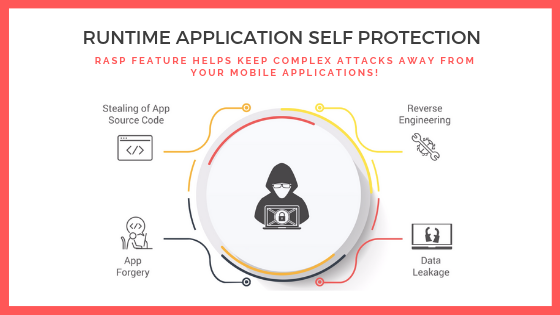RASP the Forefront of Application Security
In the ever-expanding realm of cybersecurity, the battle to protect applications from malicious attacks continues to escalate. Preemptive asks organizations to look for innovative approaches to fortify their applications as threats grow in sophistication. Runtime Application Self-Protection (RASP), is a groundbreaking technology that revolutionizes application security by enabling applications to defend themselves in real-time.
We will uncover RASP’s game-changing potential in today’s evolving threat landscape. Brace yourself for an enlightening exploration of how application security is reshaping how we protect our applications from advanced cyber threats.
Understanding RASP

Runtime Application Self-Protection is a dynamic security technology that integrates directly into an application or application runtime environment. It provides real-time monitoring, analysis, and protection against attacks, enabling applications to defend themselves autonomously.
Traditional application security measures, such as firewalls and WAFs (Web Application Firewalls), have limitations in detecting and preventing specific attacks. This offers a proactive and granular approach by residing within the application, providing heightened visibility and control over security threats.
Architecture
RASP Agent:
At the core of the architecture is the agent, a lightweight software component embedded within the application runtime environment. The agent continuously monitors application behavior, analyzing code execution, network traffic, and data flows to detect and prevent security threats.
Application Server Integration:
The agent integrates with the application server or runtime platform, enabling seamless interaction with the application’s internals. This integration allows the agent to monitor and protect critical components, such as web requests, database interactions, and server-side logic.
Keeping Pace with the Evolving Landscape of RASP
The future of Runtime Application Self-Protection holds great promise as organizations face increasingly sophisticated cyber threats. It is crucial to stay informed and proactive to keep up with the evolving landscape of technology. This involves embracing continuous innovation, closely monitoring industry trends, fostering collaboration with RASP vendors and security professionals, conducting regular security assessments, investing in training and skill development, staying updated on regulatory compliance, and fostering a security-centric culture within the organization. By adopting these strategies, organizations can stay ahead of emerging threats, maximize the benefits of technology, and maintain a robust application security posture in an ever-changing cybersecurity landscape.
Implementing RASP
Implementing RASP requires integrating the technology into the application’s runtime environment. This integration process may pose challenges, including potential performance overhead, compatibility issues, and the need for thorough testing and validation.
To effectively protect an application, RASP relies on a deep understanding of the application’s context and legitimate behaviors. Ensuring accurate context awareness and maintaining up-to-date security policies are crucial for successful deployment and operation.
Wrapping-Up
In my opinion, Runtime Application Self-Protection (RASP) represents a groundbreaking leap forward in application security. The ability to empower applications to defend themselves in real time is a game-changer that has the potential to revolutionize how we protect our digital assets. While RASP is not without its implementation challenges and considerations, its benefits, such as rapid threat detection, precise attack protection, and automated remediation, outweigh any hurdles.
Beyond the hype, I firmly believe that RASP is a transformative technology that holds the key to staying ahead of sophisticated cyber threats. By embracing and harnessing its power, we can arm our applications with an active defense mechanism that adapts and responds to attacks in real time, bolstering our security posture and safeguarding our valuable data. RASP is the future of application security, and organizations that embrace it will gain a significant advantage in the ongoing battle against cybercriminals. For more interesting blogs visit auxin.io







